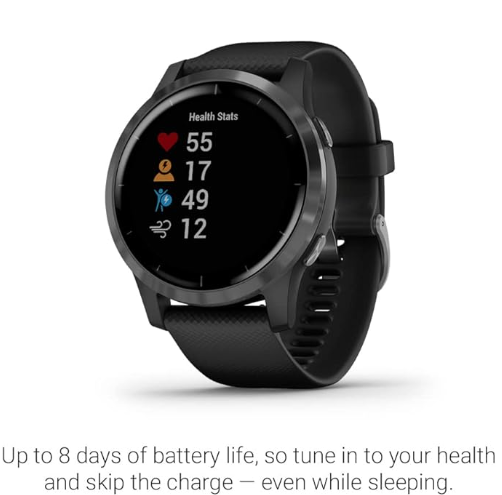Biohacking, the practice of making small, intentional changes to your lifestyle to improve your health, performance, and overall well-being, is becoming increasingly popular. If you’re new to the concept, starting your biohacking journey might seem overwhelming.
This guide will help you understand the basics of biohacking and provide actionable steps to get started, even if you’re a complete beginner.
What Is Biohacking?
 Biohacking refers to the use of science, technology, and lifestyle strategies to optimize the body and mind. Think of it as a DIY approach to personal health. While some forms of biohacking involve advanced technologies or medical interventions, most beginners focus on simple, effective methods like nutrition, exercise, sleep, and mindfulness.
Biohacking refers to the use of science, technology, and lifestyle strategies to optimize the body and mind. Think of it as a DIY approach to personal health. While some forms of biohacking involve advanced technologies or medical interventions, most beginners focus on simple, effective methods like nutrition, exercise, sleep, and mindfulness.
My goal is to better understand how my body works and make adjustments to improve my quality of life.
Why Start Biohacking?
Biohacking can help you:
- Improve physical health: Enhance energy levels, strength, and endurance.
- Boost mental clarity: Reduce brain fog, increase focus, and improve memory.
- Optimize sleep: Sleep more soundly and wake up refreshed.
- Increase longevity: Promote a healthier, longer life.
- Enhance mood and resilience: Develop better emotional control and a positive outlook.
The beauty of biohacking lies in its flexibility—you can tailor it to suit your unique needs and goals.
How to Start Biohacking for Beginners
Here’s a step-by-step plan to start biohacking safely and effectively:
1. Define Your Goals
Before diving in, clarify what you want to achieve. Common goals include:
- Increasing energy
- Losing weight
- Improving focus
- Reducing stress
- Enhancing athletic performance
Your goals will guide your biohacking efforts and help you measure progress.
2. Start with Tracking
You can’t improve what you don’t measure. Begin by tracking various aspects of your health and lifestyle:
As an Amazon Associate, I earn commission from qualifying purchases
- Sleep: Use a sleep tracker to monitor duration and quality. If this sounds like something that would improve your sleep as well, check it out on Amazon HERE
- Diet: Keep a food diary or use apps to track your calorie and nutrient intake.
- Activity: Wear a fitness tracker to measure steps, workouts, and heart rate.
- Mood and Focus: Journal daily to record your emotional state and productivity.
Tracking creates a baseline and reveals patterns in your habits.
3. Optimize Your Nutrition
Food is one of the most powerful biohacking tools. Here are some beginner-friendly strategies:
- Eat Whole Foods: Focus on fruits, vegetables, lean proteins, healthy fats, and whole grains.
- Reduce Sugar and Processed Foods: Cut back on foods that spike blood sugar and cause energy crashes.
- Try Intermittent Fasting (IF): Restrict eating to a specific window each day, such as 8 hours on and 16 hours off. IF can improve energy, focus, and weight management.
- Hydrate: Drink plenty of water and consider adding electrolytes.
- Experiment with Supplements: Start with basic supplements like omega-3s, magnesium, and vitamin D. Always consult a healthcare professional before adding supplements to your routine.
4. Prioritize Sleep
Sleep is foundational for physical and mental health. To optimize your sleep:
- Set a Consistent Schedule: Go to bed and wake up at the same time every day.
- Create a Sleep Sanctuary: Keep your bedroom dark, cool, and quiet.
- Limit Screen Time: Avoid screens for at least an hour before bed to reduce blue light exposure.
- Use Sleep Aids: Consider melatonin or herbal remedies like valerian root if you struggle to fall asleep.
- Track Your Sleep: Use devices like Oura Ring or Fitbit to gain insights. The Garmin Vivosmart 4 is an excellent tracker to monitor your sleeping patterns.
You can see the price of the Garmin Vivosmart 4 here on Amazon
5. Incorporate Movement
Regular physical activity is key to biohacking. Start with:
- Daily Walks: Aim for 30 minutes of walking each day to boost cardiovascular health.
- Strength Training: Use bodyweight exercises or weights to build muscle.
- High-Intensity Interval Training (HIIT): Short bursts of intense exercise improve endurance and metabolism.
- Stretching and Mobility Work: Incorporate yoga or dynamic stretches to maintain flexibility.
Choose activities you enjoy to build a sustainable routine.
6. Enhance Mental Clarity
Mental clarity and focus are vital for productivity and well-being. Biohacks for the mind include:
- Mindfulness and Meditation: Spend 5–10 minutes daily practicing mindfulness.
- Digital Detox: Limit time on social media and other distractions.
- Nootropics: These are supplements or substances that enhance brain function. Beginners might try caffeine, L-theanine, or ginseng.
- Brain Games: Engage in puzzles, reading, or learning a new skill to keep your mind sharp.
7. Experiment with Cold and Heat Therapy

Exposing your body to temperature extremes can improve resilience and recovery:
- Cold Showers or Ice Baths: Boost circulation and reduce inflammation.
- Saunas: Promote detoxification and relaxation. You can view the price of a portable sauna on Amazon and begin your journey of detoxing and relaxing before sleep.
- Contrast Therapy: Alternate between hot and cold treatments to enhance recovery.
Start slowly to acclimate your body to temperature changes.
8. Cultivate a Positive Environment
Your surroundings influence your health and mindset. Optimize your environment with these hacks:
- Declutter: Keep your space tidy to reduce stress and increase focus.
- Improve Air Quality: Use air purifiers and add plants to your home.
- Optimize Lighting: Use natural light during the day and dim lights at night to support your circadian rhythm.
- Surround Yourself with Supportive People: Build a community of like-minded individuals to share your biohacking journey.
9. Track Your Progress and Adjust
As you try different biohacks, track the results to see what works best for you. Adjust your approach based on:
- How you feel: More energy, better focus, improved mood.
- Objective data: Sleep scores, body composition, fitness metrics.
- Feedback from others: Friends and family may notice changes before you do.
10. Stay Curious and Keep Learning
Biohacking is an ongoing process of self-discovery. Stay curious and:
- Read books and blogs on biohacking.
- Listen to podcasts from experts like Dave Asprey or Ben Greenfield.
- Join online communities to exchange tips and experiences.
- Experiment with new techniques and technologies as they emerge.
Safety Tips for Beginners
While biohacking can be transformative, it’s essential to prioritize safety:
- Start Small: Make incremental changes to avoid overwhelming yourself.
- Do Your Research: Understand the potential risks and benefits of any new biohack.
- Listen to Your Body: Pay attention to how your body responds and stop if something feels off.
- Consult Professionals: Work with healthcare providers for personalized advice, especially if you have underlying health conditions.
Common Beginner Mistakes to Avoid
- Trying Too Many Hacks at Once: Focus on one or two areas to start.
- Being Inconsistent: Biohacking requires regular practice and commitment.
- Ignoring the Basics: Advanced techniques won’t work if your foundation (nutrition, sleep, exercise) isn’t solid.
- Comparing Yourself to Others: Everyone’s body is different. What works for someone else may not work for you.
Conclusion
Starting your biohacking journey as a beginner doesn’t have to be complicated. By defining your goals, tracking progress, and focusing on foundational habits like nutrition, sleep, and exercise, you can make significant improvements to your health and well-being.
Remember, biohacking is a personal journey—experiment, learn, and adjust to find what works best for you. With curiosity and consistency, you’ll unlock your body’s full potential and pave the way for a healthier, more fulfilling life.

